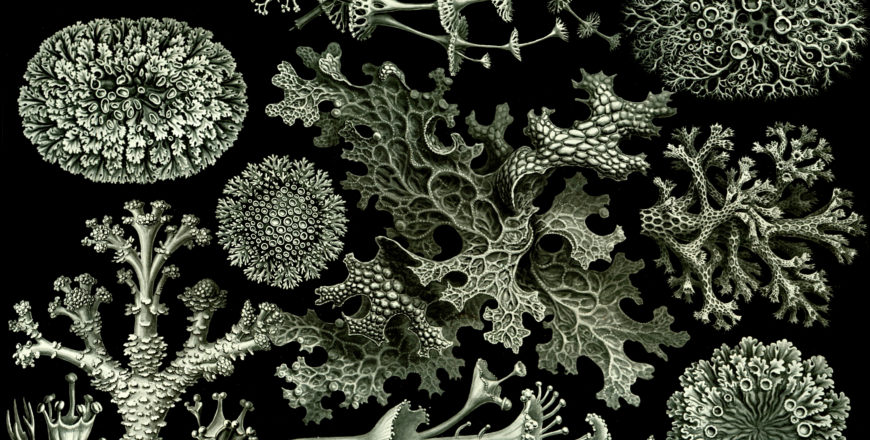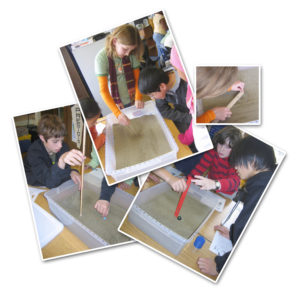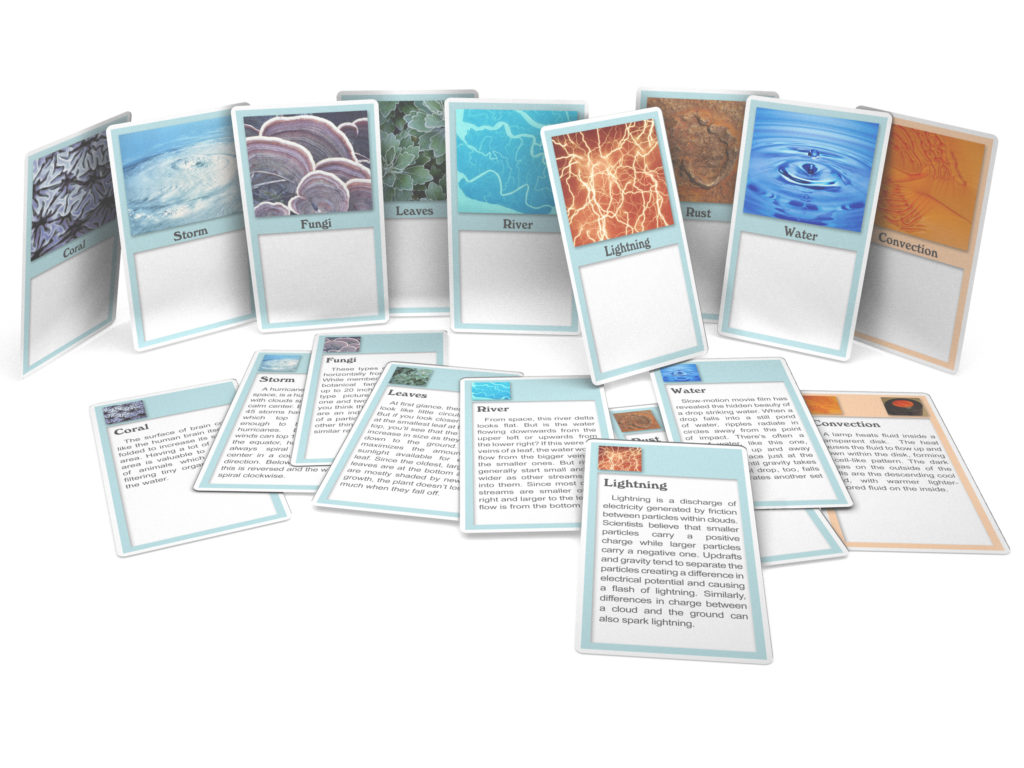Patterns in Nature

The Supermarket Science Patterns in Nature materials were developed to foster scientific inquiry and support guided exploration of visual patterns found in the world all around us: from brunches of trees to cracks in the pavement. While the activities differ by grade level, the overarching theme is the same: within nature, many similar patterns can be seen in objects of wildly differing sizes and materials. Often, objects with similar patterns possess an underlying similarity of construction. In these activities, children are asked to analyze visual data and to come up with scientific conclusions through logical reasoning.
 While the Patterns in Nature activities can be done all on their own, consider doing them together with Astronomy and Impacts—they sort of all go together. But frankly so do the activities about animals—we live in one universe and things tie together. One of the greatest joys in learning is discovering these connections. The convolutions of human brains look very similar to brain coral surface (thus the name) and follow the pattern for packing.
While the Patterns in Nature activities can be done all on their own, consider doing them together with Astronomy and Impacts—they sort of all go together. But frankly so do the activities about animals—we live in one universe and things tie together. One of the greatest joys in learning is discovering these connections. The convolutions of human brains look very similar to brain coral surface (thus the name) and follow the pattern for packing.
Main Ideas
Research
- Children are asked to research basic information about different phenomena using visual and written information provided in this book (a given source) and a library or the Internet (a new source).
Precision
- Each label, name, or word has a specific meaning that all scientists in the same field understand to mean exactly the same thing.
- Descriptions of objects and events need to be precise enough to limit misunderstanding or misinterpretation by the readers as much as possible.
- “Fuzzy thinking” is not allowed.
Logical Thinking
- There are two pathways in science: deduction and induction. Deduction is a process that puts together bits of data and evidence to build a theory—it’s bottom up reasoning. Induction is the process that starts with an idea and then looks for data and evidence to support it—it’s top down reasoning.
- Logical reasoning is a formal way of thinking (usually deductive) where each successive thought is built upon the previous one; as long as each link in a chain of logical reasoning is true, the end conclusions are true.
Classification
- Objects can be grouped together based on visual analysis.
- Objects can be grouped according to inferred physical characteristics based on visual analysis.

Nature tries to do the most with the least. There are certain patterns that nature favors for their economy. If we look, we will see the same patterns come up over and over again in different scales, in different materials, and over different spans of time. Patterns sometimes reveal information about how objects were created. Objects that share similar patterns are often created through similar underlying mechanisms. This set of activities focuses on developing an appreciation for the beauty and resourcefulness of patterns found not only here on Earth, but throughout our universe.
We can use everyday objects found in our kitchens to learn about turbulent patterns that look like spirals.
When cracks develop, the pattern they take is chaotic AND predictable!
Patterns are everywhere. We can find them on our skin and in our bodies, on the sidewalk and on the side of buildings, in how plants grow and how mountains erode. Once you learn the basic patterns in nature, you will see them everywhere.
